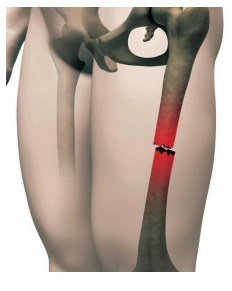Definition, Types, Causes, Signs, symptoms, Diagnosis, Surgical Management - Fracture | 12th Nursing : Chapter 2 : Medical Surgical and Applied Nursing Management Psychology of Human Diseases
Chapter: 12th Nursing : Chapter 2 : Medical Surgical and Applied Nursing Management Psychology of Human Diseases
Fracture
Fracture
Bone fracture is a medical condition where the continuity of the
bone is broken. A significant percentage of bone fractures occur because of
high force impact or stress. A fracture caused by medical conditions which
weakens the bone (e.g Osteoprosis) is known as a pathological fracture.
A crack (not only a break) in the bone is also known as a fracture.
Fractures can occur in any bone in the body.
Definition
A fracture is a breakage in the continuity of bone and is defined
according to type and extended.

Types
1. Complete fracture involves the break across the entire
cross section of the bone and is frequently displaced.
2. Incomplete Fracture: The break occurs only through part of the
cross section of the bone.
3. Open fracture: The skin may be pierced by the bone or by
a blow that breaks the skin at the time of the fracture. The bone may or may
not be visible in the wound.
4. Closed Fracture: Does not produce a break in the skin
5. Pathologic fracture: A pathologic fracture (also called
insufficiency fracture) is a bone fracture caused by disease that led to
weakness of the bone structure.
Pattern of fracture
·
Transverse fracture: This type of fracture has a horizontal
fracture line.
·
Oblique fracture: This type of fracture has an angled
pattern.
·
Comminuted fracture: In this type of fracture, the bone
shatters into three or more pieces.
· Other types: Avulsion fracture, Compression (crush) fracture, Greenstick
fracture, Hairline fracture, Impacted fracture, Intra articular fracture,
Longitudinal fracture, Spiral fracture, Stress fracture, Torus (buckle)
fracture.
Causes
Most fractures are caused by
·
Fall
·
Automobile accident.
·
Osteoporosis, infection
·
Tumor
·
Direct violence
·
Bending forces
·
Crushing force
·
Sudden twisting motion.
Signs and symptoms
·
Pain, swelling, bruising, discoloration of the skin
·
Angulation
·
False motion
·
deformity
·
Shortening and Crepitus
·
Tenderness
·
The patient is unable to put weight on the injured area
·
The patient cannot move the affected area
·
Pale and clammy skin
·
Dizziness
Diagnosis
·
History of incident whether fall, accident, trauma should be asked
to patient or witnesses.
·
Physical examination, identify signs and symptoms, and make a
diagnosis.
·
X-ray, CT scans, MRI done as required.
The treatment of fractures
Goals of fracture treatment
·
Restore fracture fragments to their normal anatomic position
(Reduction)
·
Maintain reduction in place until heating occurs (Immobilization)
·
Promote regaining of normal function and strength of the affected
part (rehabilitation)
Methods for obtaining fracture reduction
·
Closed reduction
·
Traction
·
Open reduction
Methods for maintaining immobilization
External Devices
• Splint
• Brace
• Case
• External fixator
• Bandage
Internal devices
• Nails
• Plates
• Screws
• Wires
• Rods
Maintaining and Restoring function
·
Maintain reduction and immobilization
·
Elevate to minimize swelling
·
Control anxiety and pain
·
Isometric and muscle setting exercise
Complications of fractures
·
Fat embolism
·
Infection
·
Hypovolemic or traumatic shock
·
Delayed healing
·
Nerve or blood vessel damage
·
Arthritis
·
Unequal leg length
·
Mal union or non union
Nursing Management of fractures
·
Bed rest
·
Vital signs
·
Skin care
·
Prevent infection
·
Intake and output chart
·
Encouraging mobility
·
Providing adequate nutrition.
Surgical Management
·
Open reduction
·
Closed reduction
·
Internal fixation
·
Bone graft
·
Arthroplasty
·
Joint replacement
·
Amputation
Related Topics